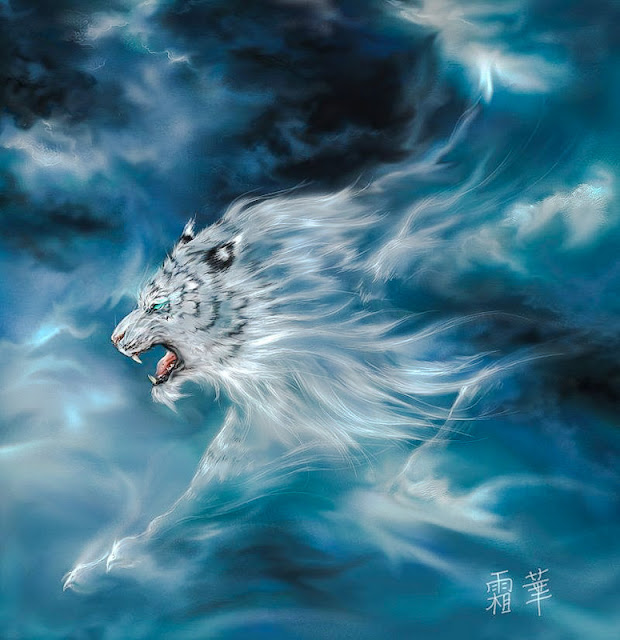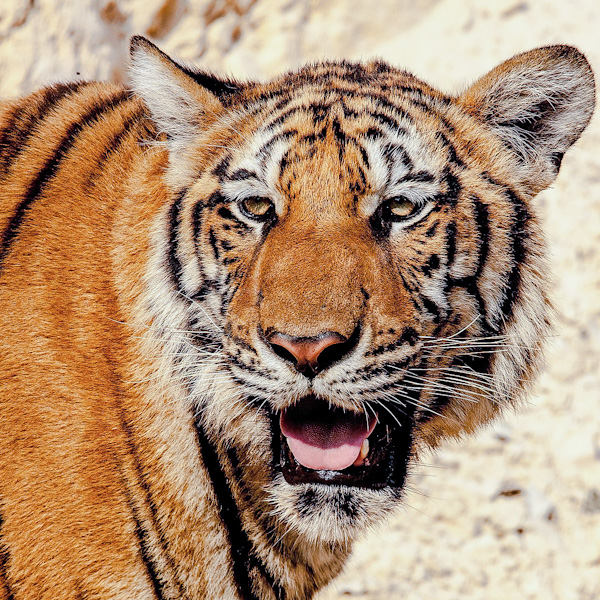India's national animal (tiger) attacks its national bird (peacock)
INDIA: Okay, a bird is an animal but you get the point. It is both a neat but brutal video. Fortunately, the magnificent Indian peafowl, Pavo cristatus, escaped the equally magnificent 'Royal Bengal tiger' aka the Bengal tiger. Not sure why they bother to call it royal. Technically this is a Bengal tiger. The bird and cat are bound to meet from time to time in India.
The Bengal tiger is critically endangered. Its population - mainly in India - is pretty stable but very low. You can find out all you want about the Bengal tiger on this website so please feel free to search.
I will dip my toe into information about the Indian peafowl. It is also known as the common peafowl and blue peafowl. It is native to the Indian subcontinent. Although it has been introduced to many other countries. The male of the species is referred to as a peacock and the female is referred to as a peahen. Colloquially they are both referred to as peacocks.
 |
| Bengal tiger attacks India's national bird the peacock. Screenshot. |
The function of the peafowl's elaborate fan of feathers has been debated, apparently, for over a century. Even Charles Darwin in the 19th century found its existence to be a puzzle. This is because it is hard to explain on the basis of Darwin's theory of natural selection.
He decided that the fan's evolution was based upon 'sexual selection' by which I presume he means a peacock with the brightest coloured feathers is able to attract the best females and produce the best offspring with the greatest chance of survival. Male birds often have to perform dances and routines in bright feathers in order to attract females it seems to me.
The Indian peafowl is not endangered. They estimate that there are a hundred thousand in India. It is a widely distributed bird and protected under the law in India. There is, sadly, illegal poaching of this bird for his flesh to eat resulting in population declines in parts of India.
They breed readily in captivity. Occasionally they are killed by accidental poisoning when feeding on seeds treated by pesticides. Indian legislation allows the collection of their feathers provided they have been shed naturally. Legally, they cannot be plucked. In certain parts of India, they are a nuisance to agriculture as they damage crops.
It is not readily clear to me whether Bengal tigers pluck the feathers of birds that they catch before consuming them. Some wild cat species do and some don't. I think this is a point worth making because the Indian peacock has a lot of very glamorous and long feathers which must interfere in their consumption, dare I say it. It is a rather unpleasant thought but if this tiger had managed to catch this peacock, they would have eaten it.
As you might expect, the tiger was picked as the national animal of India because it is such an impressive and iconic animal. They have great courage, strength, agility, presence and elegance. Many sports teams in America, in particular, name themselves after tigers or indeed other wild cat species.
Perhaps the greatest or at least one of the greatest sports persons of all time, Tiger Woods, is named after the iconic tiger. It might be one reason as to why he was so successful. They say that a name can influence a person's future.




Comments
Post a Comment
Please comment.